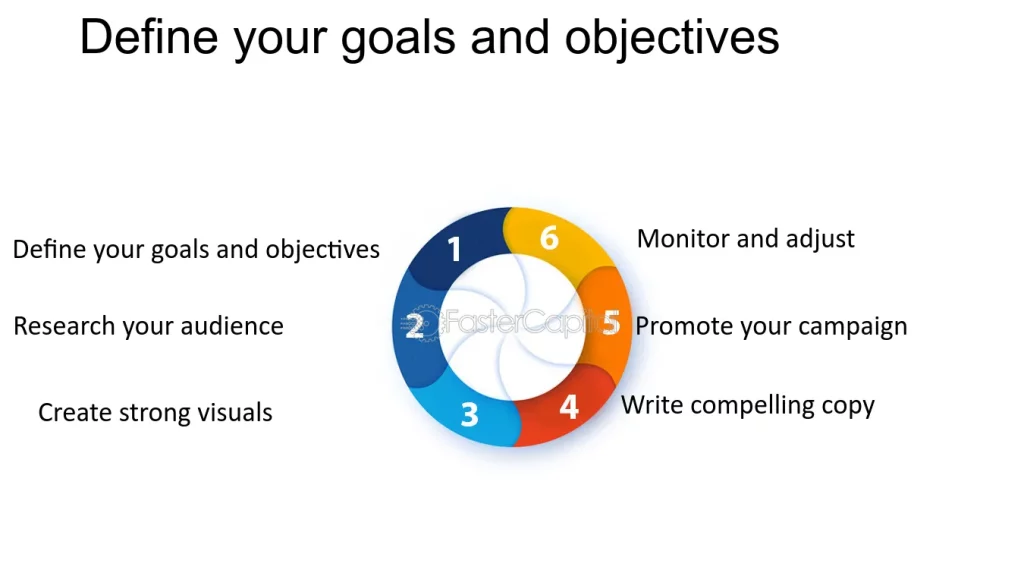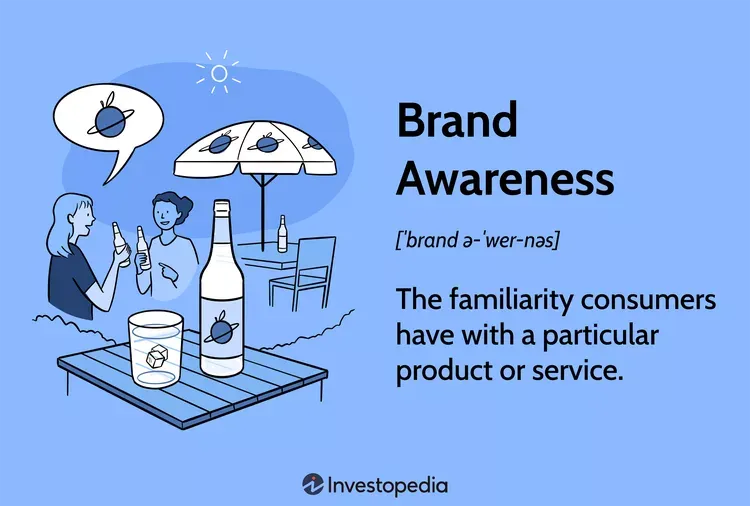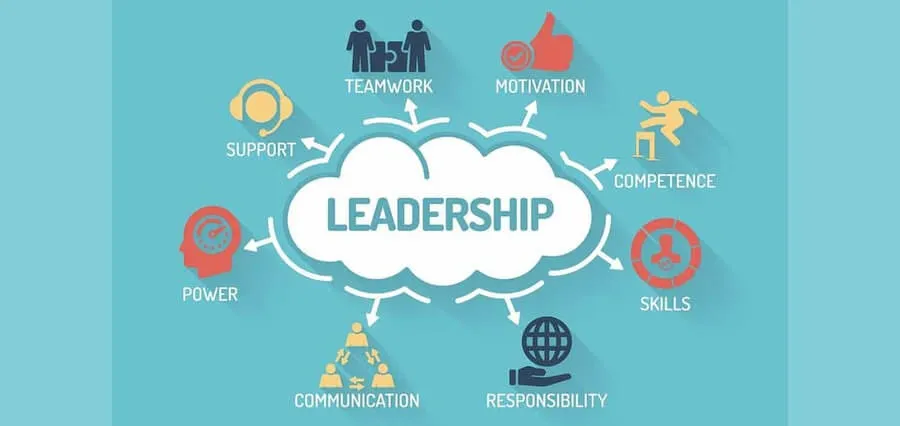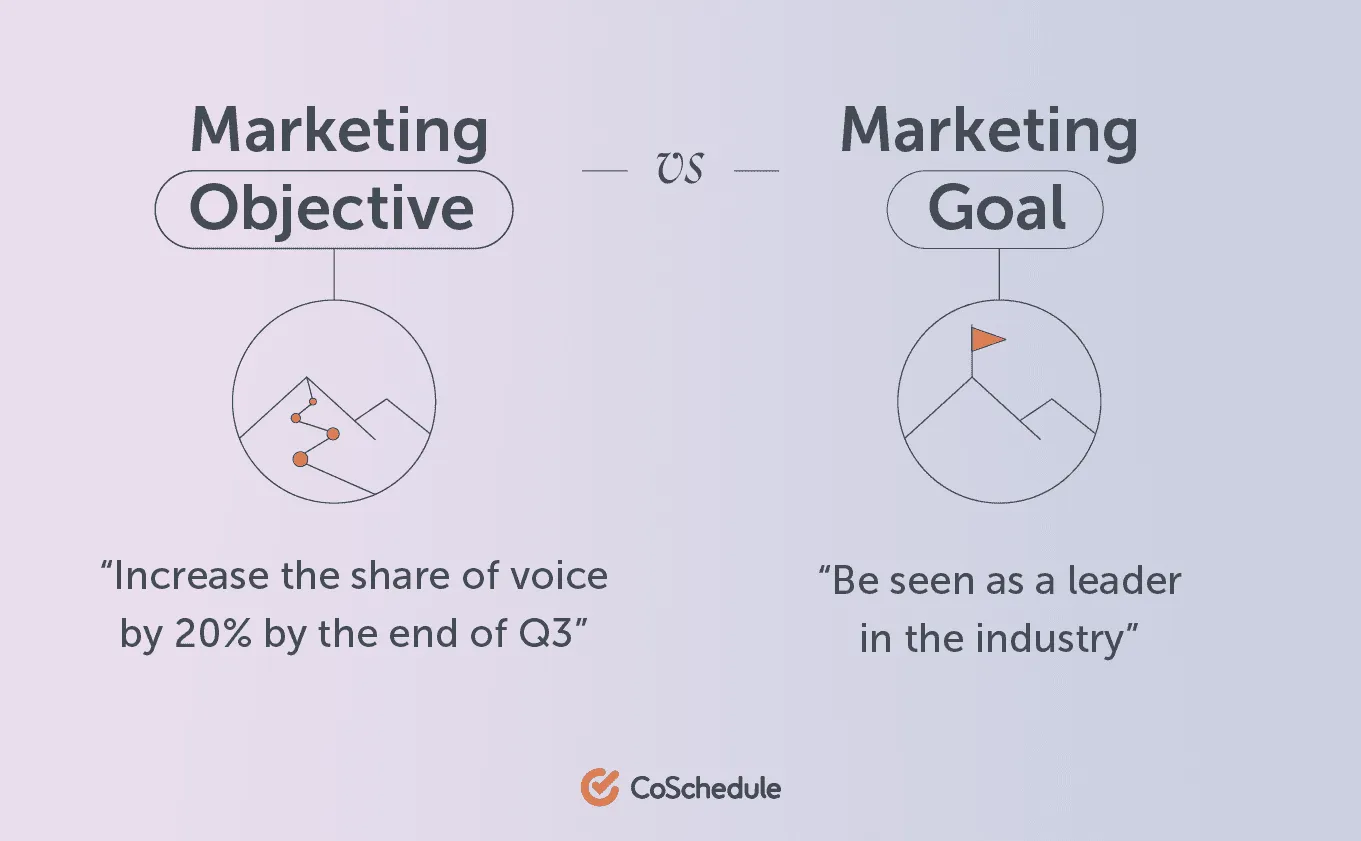In the dynamic world of marketing, the ability to create captivating and effective campaigns is the key to driving business growth, connecting with target audiences, and achieving measurable success. Whether you’re a seasoned marketing professional or just starting out, understanding the fundamentals of marketing campaigns is essential for navigating the ever-evolving landscape of modern marketing.
In this comprehensive guide, we’ll delve into the intricacies of crafting successful marketing campaigns, exploring the essential components, strategies, and best practices that can help you elevate your marketing efforts and unlock new opportunities for your business.
Understanding the Fundamentals of Marketing Campaigns

Defining Marketing Campaigns
At the heart of any successful marketing strategy lies the marketing campaign – a coordinated and strategic effort to promote a product, service, or brand to a specific target audience. Marketing campaigns can take on various forms, from traditional advertising to digital marketing initiatives, and they serve as the driving force behind effectively communicating your brand’s message, generating leads, and ultimately, driving conversions.
The Importance of Marketing Campaigns
In today’s competitive landscape, the importance of well-executed marketing campaigns cannot be overstated. Effective campaigns can:
- Build Brand Awareness: Marketing campaigns help to establish your brand’s identity, increase visibility, and foster recognition among your target audience.
- Generate Leads and Conversions: Strategically designed campaigns can attract potential customers, nurture their interest, and ultimately, drive them to take desired actions, such as making a purchase or signing up for a service.
- Differentiate Your Offerings: Through compelling campaigns, you can highlight the unique features, benefits, and value propositions of your products or services, setting you apart from competitors.
- Enhance Customer Engagement: Engaging and interactive marketing campaigns can foster stronger relationships with your audience, encouraging loyalty and advocacy.
- Measure and Optimize: Marketing campaigns provide valuable data and insights that can be used to refine your strategies, measure the effectiveness of your efforts, and make informed decisions for future campaigns.
The Elements of a Successful Marketing Campaign
Crafting a successful marketing campaign involves a harmonious blend of various elements, each playing a crucial role in achieving your desired outcomes. These key elements include:
- Clear Objectives: Defining specific, measurable, achievable, relevant, and time-bound (SMART) goals is the foundation for any effective marketing campaign.
- Target Audience: Thorough research and understanding of your target audience’s demographics, behaviors, pain points, and preferences are essential for tailoring your campaign’s messaging and approach.
- Compelling Messaging: Crafting a clear, compelling, and consistent brand message that resonates with your target audience is crucial for driving engagement and conversions.
- Integrated Channels: Leveraging a mix of traditional and digital marketing channels, such as social media, email, content marketing, and advertising, can amplify the reach and impact of your campaign.
- Compelling Creative: Visually striking and emotionally engaging creative elements, including graphics, videos, and imagery, can captivate your audience and leave a lasting impression.
- Measurable Metrics: Establishing key performance indicators (KPIs) and tracking the success of your campaign through data-driven analytics can inform future optimization and decision-making.
Understanding these fundamental elements will serve as a solid foundation for crafting and executing impactful marketing campaigns that drive tangible results for your business.
Defining Your Campaign Objectives

Aligning Objectives with Business Goals
The first and most crucial step in crafting a successful marketing campaign is to clearly define your objectives. These objectives should be closely aligned with your overall business goals, ensuring that your campaign efforts contribute directly to the growth and success of your organization.
When defining your campaign objectives, consider the following:
- Revenue Generation: Are you aiming to drive sales, increase customer acquisition, or boost average order value?
- Brand Awareness: Do you want to enhance brand visibility, improve brand perception, or establish your brand as a thought leader in the industry?
- Customer Engagement: Are you focused on increasing customer loyalty, fostering deeper relationships, or improving customer retention?
- Lead Generation: Is your primary objective to generate qualified leads that can be nurtured and converted into paying customers?
- Market Expansion: Do you want to penetrate new markets, target new customer segments, or increase market share?
By aligning your campaign objectives with your broader business goals, you can ensure that your marketing efforts are strategically focused and contribute to the overall success of your organization.
Defining SMART Objectives
Once you have identified the overarching objectives for your marketing campaign, it’s essential to refine them further by making them SMART:
- Specific: Clearly define the desired outcome of your campaign, such as “Increase website traffic by 25% within the next 3 months.”
- Measurable: Establish quantifiable metrics that can be tracked and analyzed, such as conversion rates, lead generation, or social media engagement.
- Achievable: Ensure that your objectives are realistic and attainable within the given timeframe and resources.
- Relevant: Confirm that your campaign objectives align with your broader business goals and customer needs.
- Time-Bound: Establish a clear timeline for achieving your objectives, such as “Increase email newsletter subscribers by 15% by the end of the quarter.”
By setting SMART objectives, you can create a clear roadmap for your marketing campaign, measure its success, and make informed decisions to optimize your efforts for maximum impact.
Conducting Audience Research
Understanding Your Target Audience
Effective marketing campaigns begin with a deep understanding of your target audience. By conducting thorough research and analysis, you can gain valuable insights into the demographics, behaviors, preferences, and pain points of the individuals or organizations you aim to reach.
When conducting audience research, consider the following key elements:
- Demographic Factors: Age, gender, income, education level, occupation, location, and other relevant demographic characteristics.
- Psychographic Factors: Interests, values, attitudes, lifestyles, and decision-making influences.
- Behavioral Factors: Purchase patterns, media consumption habits, online activities, and engagement with your brand or industry.
- Pain Points and Challenges: The specific problems, frustrations, or needs that your target audience is trying to solve.
Leveraging Buyer Personas
To effectively translate your audience research into actionable insights, consider developing buyer personas – semi-fictional representations of your ideal customers. These personas can help you create targeted messaging, tailor your marketing strategies, and ensure that your campaign resonates with the right people.
When creating buyer personas, consider the following:
- Persona Name and Demographic Profile: Assign a name and create a detailed demographic profile for each persona.
- Goals and Challenges: Identify the primary goals, pain points, and challenges that each persona is trying to address.
- Buying Behavior: Understand the typical buying journey, decision-making process, and preferred communication channels for each persona.
- Motivations and Concerns: Uncover the key motivations, fears, and objections that influence each persona’s purchasing decisions.
- Preferred Content and Messaging: Determine the types of content, messaging, and communication styles that resonate best with each persona.
By developing comprehensive buyer personas, you can tailor your marketing campaigns to the specific needs, preferences, and behaviors of your target audience, increasing the likelihood of success.
Gathering Audience Insights
To gather the necessary insights for creating your buyer personas and understanding your target audience, you can leverage a variety of research methods, such as:
- Surveys and Questionnaires: Directly engage with your existing customers or potential leads to gather valuable feedback and insights.
- Social Media and Online Monitoring: Analyze your audience’s online behavior, interactions, and conversations to identify trends and patterns.
- Competitive Analysis: Examine the strategies and tactics used by your competitors to better understand the landscape and identify opportunities.
- Customer Interviews and Focus Groups: Conduct in-depth interviews or gather feedback from a targeted group of customers to uncover deep insights.
- Data Analytics: Leverage your website analytics, customer relationship management (CRM) data, and other sources to extract valuable audience insights.
By combining these research methods, you can develop a robust understanding of your target audience, informing the development of effective, personalized marketing campaigns.
Crafting Compelling Campaign Messaging
Developing a Unique Value Proposition
At the heart of any successful marketing campaign lies a compelling value proposition – a clear and concise statement that communicates the unique benefits and advantages your product or service offers to your target audience. A strong value proposition can differentiate your brand, drive engagement, and influence purchasing decisions.
When crafting your value proposition, consider the following key elements:
- Customer-Centric Focus: Ensure that your value proposition directly addresses the specific needs, pain points, and desires of your target audience.
- Unique Differentiators: Highlight the unique features, capabilities, or solutions that set your offering apart from the competition.
- Tangible Benefits: Clearly articulate the concrete, measurable benefits that your customers will receive by choosing your product or service.
- Emotional Appeal: Incorporate elements that evoke positive emotions and create a strong, memorable connection with your audience.
- Simplicity and Clarity: Ensure that your value proposition is concise, easy to understand, and immediately conveys the value you provide.
By crafting a compelling value proposition, you can create a strong foundation for your marketing campaign, ensuring that your messaging resonates with your target audience and effectively communicates the unique value you offer.
Developing Targeted Messaging
Once you have a solid understanding of your target audience and a compelling value proposition, it’s time to develop targeted messaging that will resonate with your customers and drive your campaign’s success.
Effective campaign messaging should consider the following elements:
- Audience-Specific Language: Tailor your messaging to the unique preferences, pain points, and communication styles of your target audience.
- Emotional Connection: Incorporate elements that evoke positive emotions, such as aspirations, desires, or a sense of belonging, to create a deeper connection with your audience.
- Consistent Branding: Ensure that your messaging aligns with your brand’s tone, personality, and visual identity to maintain a cohesive brand experience.
- Clarity and Conciseness: Keep your messaging clear, concise, and easy to understand, ensuring that your key points are communicated effectively.
- Calls-to-Action: Include clear and compelling calls-to-action that encourage your audience to take the desired next steps, such as making a purchase, signing up for a newsletter, or engaging with your brand.
By crafting targeted, emotionally resonant, and action-oriented messaging, you can create a powerful campaign that effectively communicates your value proposition and drives your desired outcomes.
Leveraging Storytelling Techniques
Storytelling has emerged as a powerful tool in the world of marketing, as it allows brands to create deeper, more meaningful connections with their audiences. By incorporating storytelling elements into your marketing campaigns, you can captivate your audience, convey your brand’s values, and leave a lasting impression.
Consider the following storytelling techniques to enhance your campaign messaging:
- Narrative Structure: Develop a compelling narrative arc that takes your audience on a journey, with a clear beginning, middle, and end.
- Relatable Characters: Introduce characters that your audience can empathize with, allowing them to see themselves in the story.
- Emotional Resonance: Craft stories that evoke emotions, such as joy, inspiration, or empathy, to create a memorable and impactful experience.
- Authenticity: Ensure that your stories are authentic and aligned with your brand’s values, creating a genuine connection with your audience.
- Consistent Messaging: Integrate your storytelling elements across various campaign touchpoints, ensuring a cohesive and seamless brand experience.
By leveraging the power of storytelling, you can create marketing campaigns that are not only informative and persuasive but also deeply engaging and memorable for your target audience.
Selecting the Right Marketing Channels

Evaluating Marketing Channels
With a clear understanding of your campaign objectives, target audience, and messaging, the next step is to select the most effective marketing channels to reach your customers and achieve your desired outcomes.
When evaluating marketing channels, consider the following factors:
- Target Audience Preferences: Identify the channels your target audience frequents and prefers to consume content and engage with brands.
- Reach and Visibility: Assess the potential reach and exposure your campaign can achieve through each channel.
- Engagement and Interactivity: Evaluate the level of engagement and interactivity you can foster with your audience on different channels.
- Cost-Effectiveness: Analyze the cost-efficiency of each channel and its potential return on investment (ROI).
- Measurability: Determine the ability to track, analyze, and optimize the performance of your campaign on each channel.
Integrating Multiple Channels
In today’s marketing landscape, a successful campaign often involves the integration of multiple channels, allowing you to reach your audience through a variety of touchpoints and deliver a cohesive brand experience.
When planning your multichannel campaign, consider the following strategies:
- Cross-Channel Consistency: Ensure that your messaging, branding, and visual elements are consistent across all the channels you utilize, creating a seamless and recognizable brand experience.
- Audience-Specific Approach: Tailor your content, messaging, and engagement strategies to best fit the unique characteristics and preferences of your audience on each channel.
- Synchronized Timing: Coordinate the timing and sequencing of your campaign activities across different channels to maximize impact and create a cohesive customer journey.
- Omnichannel Integration: Leverage the power of omnichannel marketing by seamlessly connecting your online and offline marketing efforts, providing a seamless experience for your customers.
- Data-Driven Optimization: Continuously analyze the performance of your multichannel campaign and make data-driven decisions to optimize your strategies and allocate resources effectively.
By integrating multiple marketing channels, you can reach your target audience more effectively, enhance engagement, and create a comprehensive, cohesive, and impactful marketing campaign.
Leveraging Traditional and Digital Channels
When selecting the right marketing channels for your campaign, it’s essential to consider a balanced approach that leverages both traditional and digital marketing channels. This hybrid approach can maximize your campaign’s reach, engagement, and overall effectiveness.
Traditional marketing channels may include:
- Print Advertising: Newspapers, magazines, direct mailers, and outdoor advertising, such as billboards or posters.
- Broadcast Advertising: Television and radio commercials.
- Event Marketing: Trade shows, conferences, and in-person events.
- Sponsorships: Partnerships with relevant organizations, events, or influencers.
Digital marketing channels may include:
- Social Media: Platforms like Facebook, Instagram, Twitter, LinkedIn, and YouTube.
- Content Marketing: Blogs, videos, infographics, and other valuable content shared across digital channels.
- Email Marketing: Newsletters, automated campaigns, and targeted email outreach.
- Search Engine Marketing: Pay-per-click (PPC) advertising and search engine optimization (SEO) strategies.
- Influencer Marketing: Collaborations with industry influencers, experts, or niche creators.
By strategically integrating both traditional and digital marketing channels, you can create a comprehensive campaign that reaches your target audience through multiple touchpoints, reinforces your brand message, and drives measurable results.
Crafting Compelling Campaign Assets
Developing Captivating Creative
The visual and creative elements of your marketing campaign play a crucial role in captivating your audience, conveying your brand’s personality, and leaving a lasting impression. Effective campaign assets should be visually striking, emotionally engaging, and aligned with your overall brand identity.
When developing your campaign’s creative assets, consider the following best practices:
- Consistent Branding: Ensure that your visuals, including logos, colors, typography, and imagery, are consistent with your brand’s established guidelines.
- Emotional Appeal: Incorporate design elements and imagery that evoke the desired emotions and resonate with your target audience.
- Attention-Grabbing Design: Utilize eye-catching layouts, vibrant colors, and dynamic visuals to instantly capture your audience’s attention.
- Versatility and Adaptability: Create assets that can be easily repurposed and adapted across various marketing channels and formats.
- Accessibility and Inclusivity: Ensure that your creative assets are accessible and inclusive, catering to the diverse needs and preferences of your audience.
Developing Engaging Content
In addition to captivating visual elements, your marketing campaign should also be supported by high-quality, engaging content that educates, informs, and inspires your audience. This content can take various forms, including:
- Informative Articles and Blog Posts: Provide valuable, in-depth information that addresses your audience’s pain points and establishes your brand as an industry thought leader.
- Compelling Videos: Leverage the power of video to tell your brand’s story, showcase your products or services, and create a memorable, immersive experience for your audience.
- Interactive Experiences: Develop engaging interactive assets, such as quizzes, surveys, or games, to foster deeper audience engagement and gather valuable insights.
- Social Media Content: Craft shareable, social-friendly content that sparks conversations, encourages user-generated content, and cultivates a sense of community around your brand.
- Email Campaigns: Deliver targeted and personalized email campaigns that provide relevant information, promotions, and updates to your subscribers.
When creating engaging content for your marketing campaign, remember to:
- Understand your audience’s preferences, interests, and pain points to tailor your content effectively.
- Maintain a consistent brand voice and tone across all your communication channels to strengthen brand recognition and loyalty.
- Use storytelling techniques to make your content more compelling, relatable, and memorable.
- Incorporate multimedia elements, such as images, videos, infographics, and animations, to enhance the visual appeal and engagement of your content.
- Monitor and analyze the performance of your content regularly to identify what resonates with your audience and optimize your content strategy accordingly.
Designing Interactive Experiences
Interactive experiences are becoming increasingly popular in marketing campaigns as they offer a dynamic and engaging way to connect with audiences, encourage participation, and gather valuable data insights. These interactive elements can range from simple quizzes and polls to immersive augmented reality (AR) or virtual reality (VR) experiences.
When designing interactive experiences for your campaign, consider the following strategies:
- Personalization: Create interactive content that is personalized and tailored to each user’s preferences, behaviors, or characteristics.
- Gamification: Incorporate game-like elements, such as challenges, rewards, and competitions, to make the experience more entertaining and incentivize engagement.
- Data Capture: Use interactive experiences to collect valuable data about your audience, such as preferences, feedback, or contact information, to inform future marketing strategies.
- Storytelling: Develop interactive narratives or experiences that immerse users in your brand story, products, or services, creating a memorable and impactful connection.
- Seamless Integration: Ensure that your interactive experiences seamlessly integrate with your overall campaign messaging and branding, providing a cohesive and unified customer journey.
By incorporating interactive elements into your marketing campaign, you can enhance engagement, foster deeper connections with your audience, and differentiate your brand from competitors in a crowded digital landscape.
Building Authentic Brand Storytelling

Defining Your Brand Narrative
At the core of authentic brand storytelling is a well-defined brand narrative that encapsulates your brand’s values, purpose, and personality. Your brand narrative serves as the foundation for all your marketing efforts, unifying your messaging and creating a cohesive brand identity that resonates with your audience.
When defining your brand narrative, consider the following key elements:
- Brand Values: Identify and articulate the core values that guide your brand’s decisions, actions, and relationships with customers and stakeholders.
- Brand Mission: Clearly define the overarching purpose and mission of your brand, outlining what you aim to achieve and how you make a difference in the world.
- Brand Voice: Establish a distinct brand voice that reflects your brand’s personality, tone, and style of communication across all touchpoints.
- Brand Persona: Humanize your brand by creating a relatable and authentic brand persona that connects with your audience on a personal level.
- Brand Promise: Make a meaningful promise to your customers that conveys the value, benefits, and unique selling propositions of your products or services.
Creating Emotional Connections
One of the most powerful aspects of brand storytelling is its ability to evoke emotions, create connections, and foster brand loyalty among consumers. By tapping into the emotional side of storytelling, you can engage your audience on a deeper level, elicit specific feelings and responses, and drive meaningful actions and behaviors.
To create emotional connections through brand storytelling, consider the following strategies:
- Identify Your Audience’s Emotions: Understand the emotional triggers, aspirations, fears, and desires of your target audience to tailor your storytelling effectively.
- Use Authenticity and Vulnerability: Share genuine stories, experiences, and moments that showcase the human side of your brand and build trust with your audience.
- Evoke Empathy and Relatability: Tell stories that resonate with universal experiences, struggles, or triumphs, making your brand more relatable and empathetic.
- Inspire and Motivate: Use storytelling to inspire and motivate your audience, instilling a sense of purpose, empowerment, or optimism through your brand message.
- Showcase Real People and Stories: Highlight real customers, employees, or partners in your storytelling to add authenticity, credibility, and a personal touch to your brand narrative.
By leveraging emotional storytelling techniques, you can create a strong emotional bond with your audience, enhance brand loyalty, and establish a lasting relationship built on trust, empathy, and shared values.
Engaging with User-Generated Content
User-generated content (UGC) is a valuable asset in brand storytelling as it involves real customers, fans, and followers contributing their own content, experiences, and perspectives related to your brand. By encouraging and incorporating UGC into your marketing campaigns, you can amplify your brand reach, increase authenticity, and foster a sense of community and belonging among your audience.
When engaging with user-generated content, consider the following best practices:
- Create Sharing Opportunities: Encourage your audience to share their own stories, photos, videos, reviews, or testimonials related to your brand, products, or services.
- Acknowledge and Reward Contributors: Recognize and appreciate users who create and share UGC by featuring their content, offering incentives, or running contests or giveaways.
- Curate and Showcase UGC: Select high-quality and relevant UGC to showcase on your website, social media channels, or marketing materials, highlighting real customer experiences and voices.
- Engage and Interact: Respond to and engage with users who create UGC, fostering a dialogue, building relationships, and showing appreciation for their contributions.
- Legal and Ethical Considerations: Ensure that you have the necessary permissions, rights, and guidelines in place when using UGC to protect user privacy and intellectual property.
By integrating user-generated content into your brand storytelling strategy, you can leverage the authentic voices and experiences of your customers to create a more compelling, relatable, and trustworthy brand image that resonates with your target audience.
Conclusion
In conclusion, storytelling plays a pivotal role in shaping powerful and impactful marketing campaigns that resonate with audiences, drive engagement, and build authentic connections with consumers. By selecting the right marketing channels, crafting compelling campaign assets, and building authentic brand storytelling, brands can create a cohesive and memorable brand experience that differentiates them in a competitive marketplace.
From evaluating marketing channels and integrating multiple touchpoints to developing captivating creative assets and engaging content, each aspect of a marketing campaign contributes to the overall storytelling narrative that communicates brand values, inspires emotions, and fosters meaningful relationships with customers. By consistently reinforcing brand messaging across various platforms, tailoring content to audience preferences, and leveraging user-generated content to amplify brand stories, companies can create engaging campaigns that leave a lasting impression and drive long-term loyalty.
Ultimately, by embracing the art of storytelling in marketing, brands can elevate their campaigns from mere promotions to compelling narratives that captivate, inspire, and resonate with their target audience, creating a genuine and enduring connection that goes beyond transactions to meaningful relationships.




